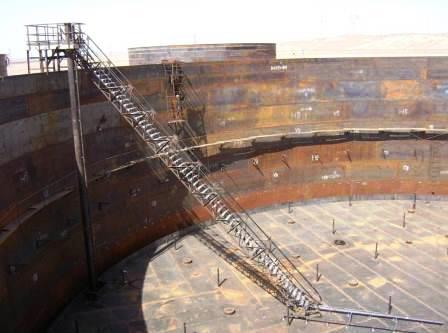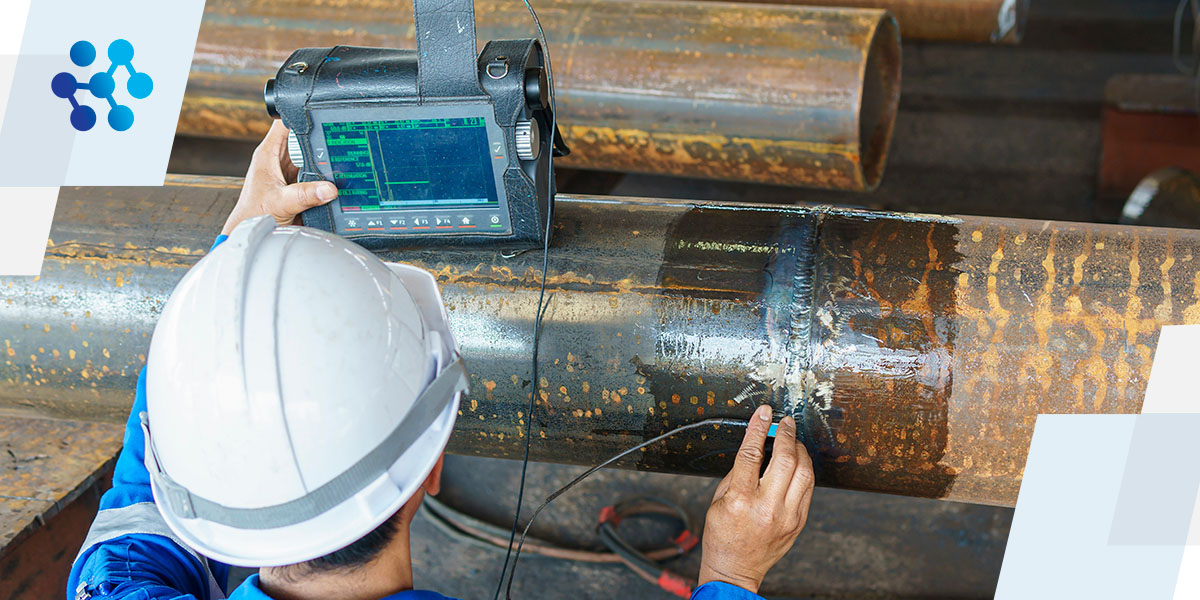The Importance of Professional Tank Welding Inspection Services
The Importance of Professional Tank Welding Inspection Services
Blog Article
A Thorough Summary of Container Welding Inspection Specifications and Methodologies for Improved Weld Top Quality and Performance
The relevance of welding examination standards in the manufacturing of storage tanks can not be overstated, as they act as the backbone for guaranteeing weld honesty and functional reliability. Different evaluation strategies, consisting of aesthetic assessments and advanced non-destructive testing techniques, are essential in identifying potential defects that might jeopardize efficiency. Sticking to governing criteria not just boosts weld top quality yet additionally alleviates the danger of expensive failures. As we check out the nuances of these approaches, it becomes necessary to take into consideration just how an organized technique can reinvent present methods and result in substantial improvements in end results.
Value of Welding Inspection Requirements

Welding examination criteria incorporate a series of requirements, consisting of material requirements, welding procedures, and certifications of personnel involved in the welding procedure. By imposing these requirements, organizations can methodically determine and fix possible issues, consequently lowering the probability of costly repairs or catastrophic failures. In addition, extensive assessment methods foster a society of liability and precision, motivating welders to keep high degrees of craftsmanship.

Typical Welding Examination Methods


Ultrasonic Checking (UT) is another common method, utilizing high-frequency acoustic waves to discover internal defects that might not show up on the surface. This technique is specifically efficient for recognizing spaces or incorporations within the weld metal. Magnetic Fragment Testing (MT) is likewise commonly utilized, particularly for ferromagnetic materials, as it discloses surface and near-surface flaws via the application of magnetic fields and ferrous particles.
Additionally, Liquid Penetrant Testing (PT) spots surface-breaking problems by applying a penetrant to the weld and then utilizing a programmer to attract out the penetrant. Each of these techniques adds to a detailed evaluation strategy, making certain that welds satisfy the stringent quality requirements needed in container construction.
Regulative Standards and Conformity
Regulatory requirements and compliance are necessary components in making certain the safety and integrity of welded structures in container construction - Tank Welding Inspection. These standards serve More hints to develop minimum needs for product residential or commercial properties, welding procedures, and evaluation practices, thus decreasing the risk of structural failures and improving overall performance
Key companies, such as the American Society of Mechanical Designers (ASME) and the American Welding Culture (AWS), supply guidelines that are extensively adopted in the industry. Conformity with these standards not only makes sure adherence to finest methods yet also fulfills legal and legal responsibilities, protecting the interests of stakeholders.
Governing bodies typically mandate adherence to specific codes, such as ASME Code Section IX for welding credentials and API 650 for welded containers. These codes outline requirements for welding techniques, qualifications of employees, and testing approaches to validate weld stability.
Normal audits and evaluations are vital to keeping compliance, as they help determine discrepancies from established requirements. Non-compliance can lead to substantial fines, job delays, and safety threats. Therefore, a durable understanding of governing criteria and a commitment to conformity are extremely important in attaining top quality and resilient welded storage tank structures.
Non-Destructive Examining Techniques
Exactly how can the stability of welded structures be assured without creating damages? Non-destructive screening important site (NDT) methods use a durable option, making it possible for assessors to review weld top quality without endangering the product - Tank Welding Inspection. Among the most usual NDT techniques are ultrasonic testing (UT), radiographic screening (RT), magnetic particle testing (MT), and dye penetrant screening (PT)
Ultrasonic screening uses high-frequency sound waves to spot internal imperfections and define material homes. It offers specific dimensions and is particularly reliable for thick products. Radiographic screening involves passing X-rays or gamma rays with the weld, producing photos that reveal architectural problems such as cracks or spaces. This method is invaluable for examining the integrity of intricate welds.
Magnetic fragment screening is suited for ferromagnetic materials, where magnetic areas expose surface and near-surface stoppages. Color penetrant screening utilizes a liquid color to highlight surface-breaking flaws, making it an effective approach for non-porous materials.
Each of these NDT approaches has distinct benefits, permitting thorough evaluations tailored to specific products and welding procedures. By implementing these methods, sectors can ensure the dependability and security of bonded Discover More structures, eventually enhancing general performance.
Enhancing Weld Top Quality Via Examination
Effective inspection plays a critical duty in improving weld quality, functioning as a crucial checkpoint in the construction process. By recognizing prospective defects early, inspections minimize the danger of compromised architectural integrity and make certain compliance with industry requirements. Employing a combination of visual examinations, non-destructive screening (NDT) techniques, and mechanical analyses, assessors can detect issues such as porosity, cracks, and incomplete combination.
Executing a robust evaluation protocol not only improves the overall top quality of welds yet additionally fosters a culture of accountability among welders and fabricators. Routine training and certification of assessment employees guarantee that they are outfitted with the required skills to recognize and address potential issues successfully. This positive approach lessens rework and linked costs, eventually adding to forecast effectiveness.
Additionally, extensive paperwork of assessment searchings for provides useful understandings right into recurring issues, assisting in continuous enhancement in welding practices. By leveraging advanced modern technologies, such as automated ultrasonic testing or electronic radiography, weld top quality can be enhanced with a lot more precise analyses. To conclude, a strenuous inspection process is essential in achieving top quality welds, making certain security, dependability, and long life in storage tank construction.
Verdict
In final thought, the application of extensive storage tank welding inspection requirements and methodologies is essential for ensuring weld stability and performance. By utilizing a combination of visual inspections, non-destructive testing methods, and adherence to governing requirements, organizations can properly recognize and minimize possible issues.
Report this page